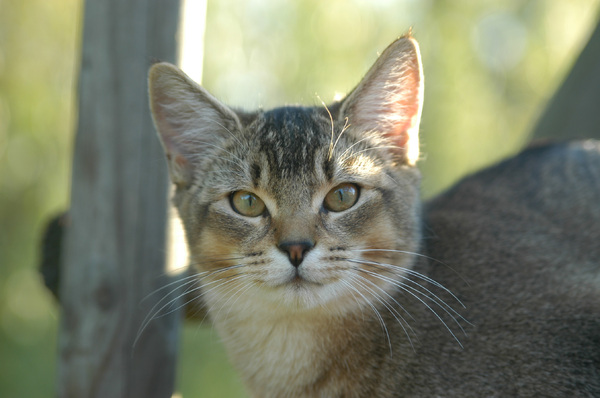Litter Box Solutions: Checking Out Alternative Feline Litters
Wiki Article

Recently, the trend towards eco-conscious living has extended to every element of our lives, including our precious pets. As pet owners become increasingly knowledgeable about the ecological effect of their furry good friends, the need for natural cat litter has actually surged. But just what is natural cat litter, and why should pet owners consider making the switch? In this comprehensive guide, we'll look into the world of natural cat litter to explore its advantages, alternatives, and whatever else you require to know.
As environmental consciousness grows amongst pet owners, the quest for sustainable cat litter options has taken center stage. Standard clay-based litters, while popular, posture ecological concerns due to their non-biodegradable nature and the environmentally extensive procedure of clay extraction. This has led to a surge in interest for environmentally friendly alternatives that promise to be kinder to the world without jeopardizing on performance. This article explores the world of cat litter options, highlighting their benefits, downsides, and what to think about when making the switch.
Clay-based feline litters, especially those that are non-clumping, have been the go-to option for years due to their absorbency and odor control properties. Nevertheless, their environmental footprint is worrying. The mining of salt bentonite, a key part in clumping clay litter, is disruptive to environments. Furthermore, these litters do not degrade, adding to landfill waste. In addition, the dust from clay litters can be hazardous to both human and feline respiratory systems, triggering family pet owners to seek healthier, more sustainable alternatives.
Biodegradable options are made from a variety of plant-based products, including recycled paper, wood pellets, corn, wheat, and walnut shells. These products not only break down naturally in the environment however likewise often originated from renewable resources, lowering the environmental effect related to their use.
Recycled Paper Litter is made from post-consumer paper waste, developed into pellets or granules. It's highly absorbent, essentially dust-free, and ideal for felines and owners with respiratory level of sensitivities. However, it might not manage odors as successfully as other materials and normally does not clump.
Wood Pellets, sourced from lumber scraps, offer a natural pine aroma that neutralizes odors without synthetic cat litter fragrances. They're low in dust and take in moisture well, turning into sawdust when wet. The sawdust can be sifted out, making the litter last longer, though some felines may not prefer the bigger pellet size.
Corn and Wheat Litter are known for their clumping Grass Seed Cat Litter ability, comparable to clay litters, making clean-up easy. They're naturally degradable and compostable, with natural enzymes that assist control odors. Nevertheless, they can be pricier than conventional litter and might attract bugs if not kept effectively.
Walnut Shell Litter utilizes the natural absorbency of crushed walnut shells, providing exceptional odor control and clumping homes. It's dust-free and eco-friendly but can be more pricey and might not appropriate for felines with nut allergic reactions.
Silica gel litter, made from silica dioxide sand, oxygen, and water, is another alternative to clay. It's highly absorbent, controls smells successfully, and is low dust. While not biodegradable, it's lighter and can last longer than clay litter, requiring less regular modifications. Nevertheless, its higher price point and the texture, which some cats might discover off-putting, are factors to consider for potential users.
Cats can be particular about their litter. Slowly present the brand-new litter by mixing it with the old, increasing the proportion of the new litter gradually to permit your feline to change.
Ecological Impact: Consider the lifecycle of the litter material, from production to disposal, to ensure it aligns with your environmental worths.
Health and wellness: Pick dust-free or low-dust alternatives to secure both your and your feline's respiratory health. Ensure the litter is free from chemicals or fragrances that could hurt your animal.
Cost: While some alternatives may be more costly in advance, their durability and the quantity needed per change can make them economical in the long run.
The Future of Cat Litter Alternatives
The pattern towards sustainable animal care items is growing, with developments in cat litter alternatives blazing a trail. Future developments may include more efficient biodegradable materials, improved odor control and clumping innovations, and even litter made from upcycled waste items. As customer need for environment-friendly items increases, we can expect to see a broader series of alternatives that do not jeopardize on benefit or efficiency.
The shift towards sustainable cat litter alternatives is not just a trend however a reflection of a growing awareness of ecological problems among pet owners. While traditional clay cat litter scoop litters have controlled the marketplace for many years, the variety of naturally degradable and innovative products now readily available deals promising options for those looking to lower their eco-friendly footprint. By considering factors such as environmental effect, health and safety, and cat approval, animal owners can make informed decisions that benefit both their furry buddies and the planet. As the industry progresses, the future of cat litter looks greener than ever, guaranteeing a great deal for cats, their owners, and the environment.